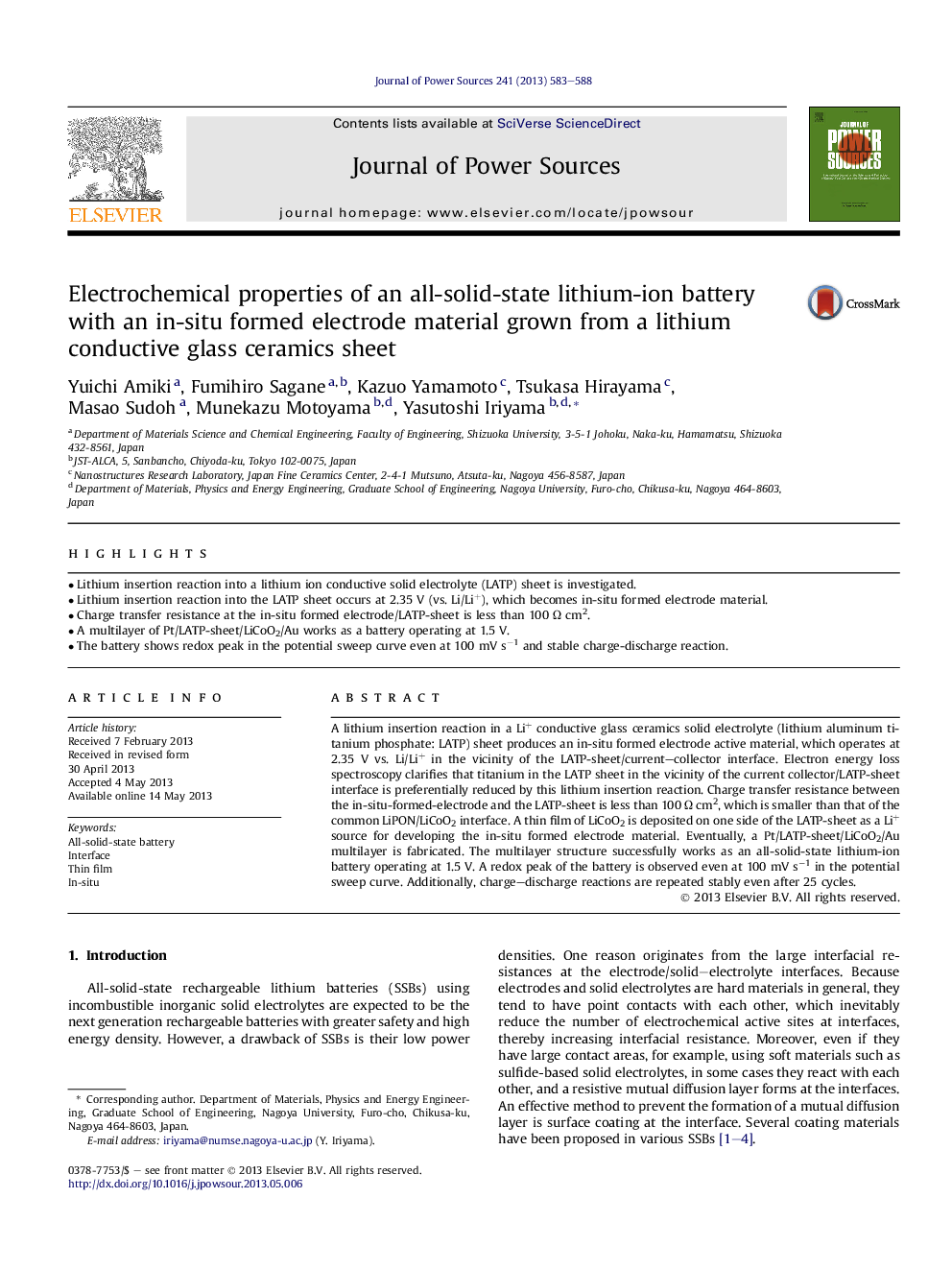| Article ID | Journal | Published Year | Pages | File Type |
|---|---|---|---|---|
| 7740524 | Journal of Power Sources | 2013 | 6 Pages |
Abstract
A lithium insertion reaction in a Li+ conductive glass ceramics solid electrolyte (lithium aluminum titanium phosphate: LATP) sheet produces an in-situ formed electrode active material, which operates at 2.35 V vs. Li/Li+ in the vicinity of the LATP-sheet/current-collector interface. Electron energy loss spectroscopy clarifies that titanium in the LATP sheet in the vicinity of the current collector/LATP-sheet interface is preferentially reduced by this lithium insertion reaction. Charge transfer resistance between the in-situ-formed-electrode and the LATP-sheet is less than 100 Ω cm2, which is smaller than that of the common LiPON/LiCoO2 interface. A thin film of LiCoO2 is deposited on one side of the LATP-sheet as a Li+ source for developing the in-situ formed electrode material. Eventually, a Pt/LATP-sheet/LiCoO2/Au multilayer is fabricated. The multilayer structure successfully works as an all-solid-state lithium-ion battery operating at 1.5 V. A redox peak of the battery is observed even at 100 mV sâ1 in the potential sweep curve. Additionally, charge-discharge reactions are repeated stably even after 25 cycles.
Related Topics
Physical Sciences and Engineering
Chemistry
Electrochemistry
Authors
Yuichi Amiki, Fumihiro Sagane, Kazuo Yamamoto, Tsukasa Hirayama, Masao Sudoh, Munekazu Motoyama, Yasutoshi Iriyama,
